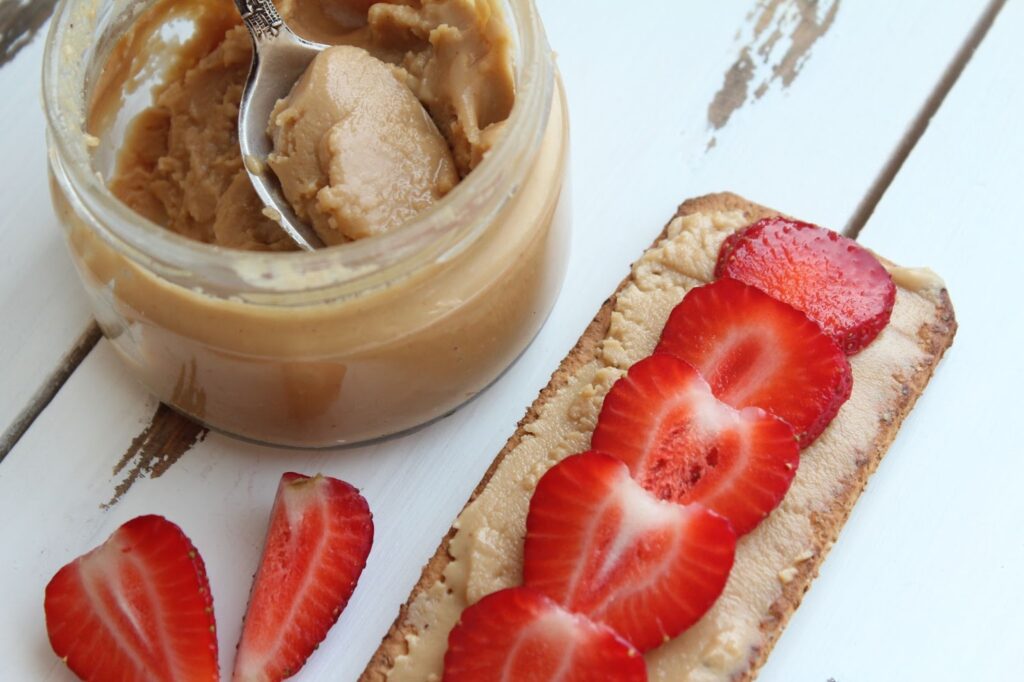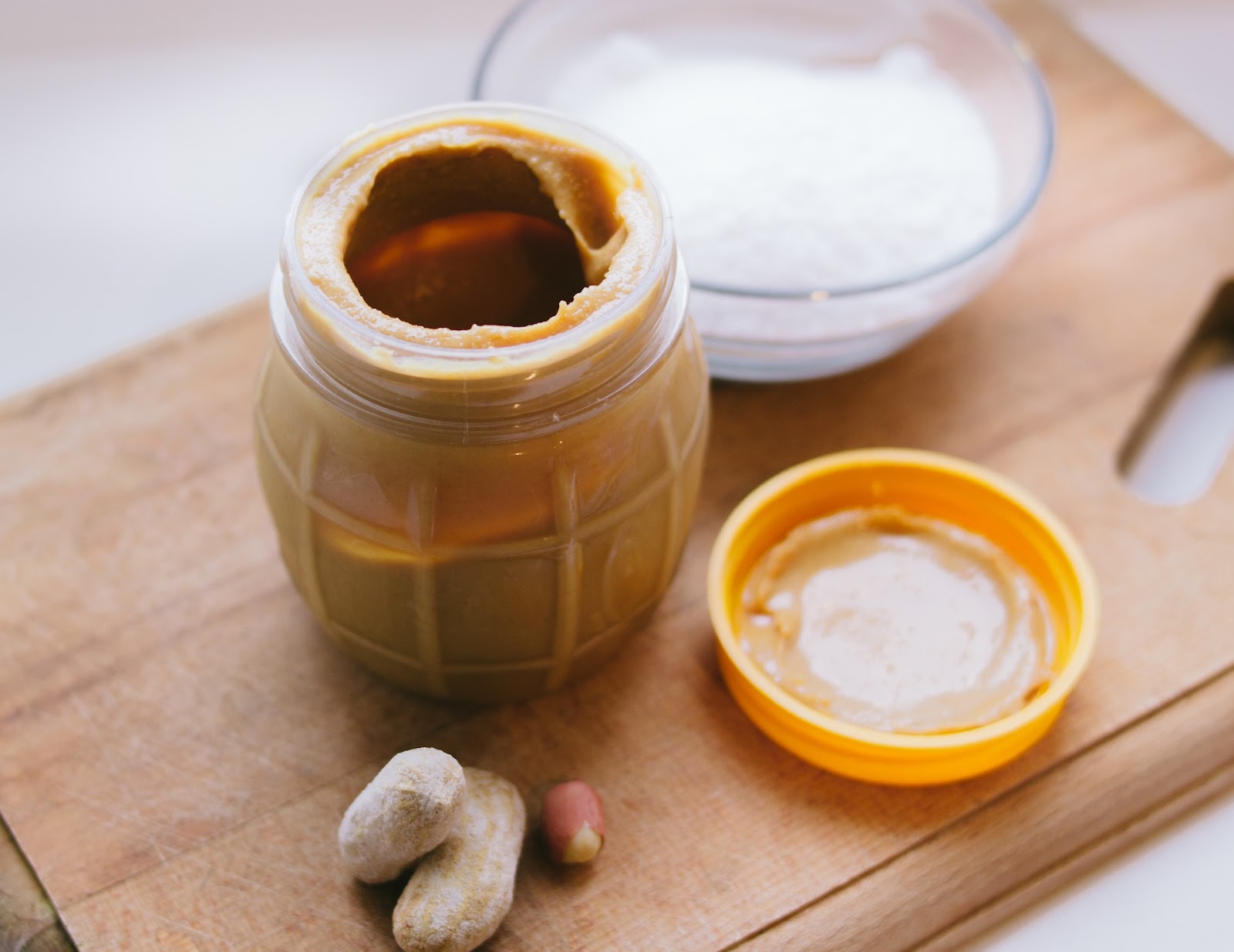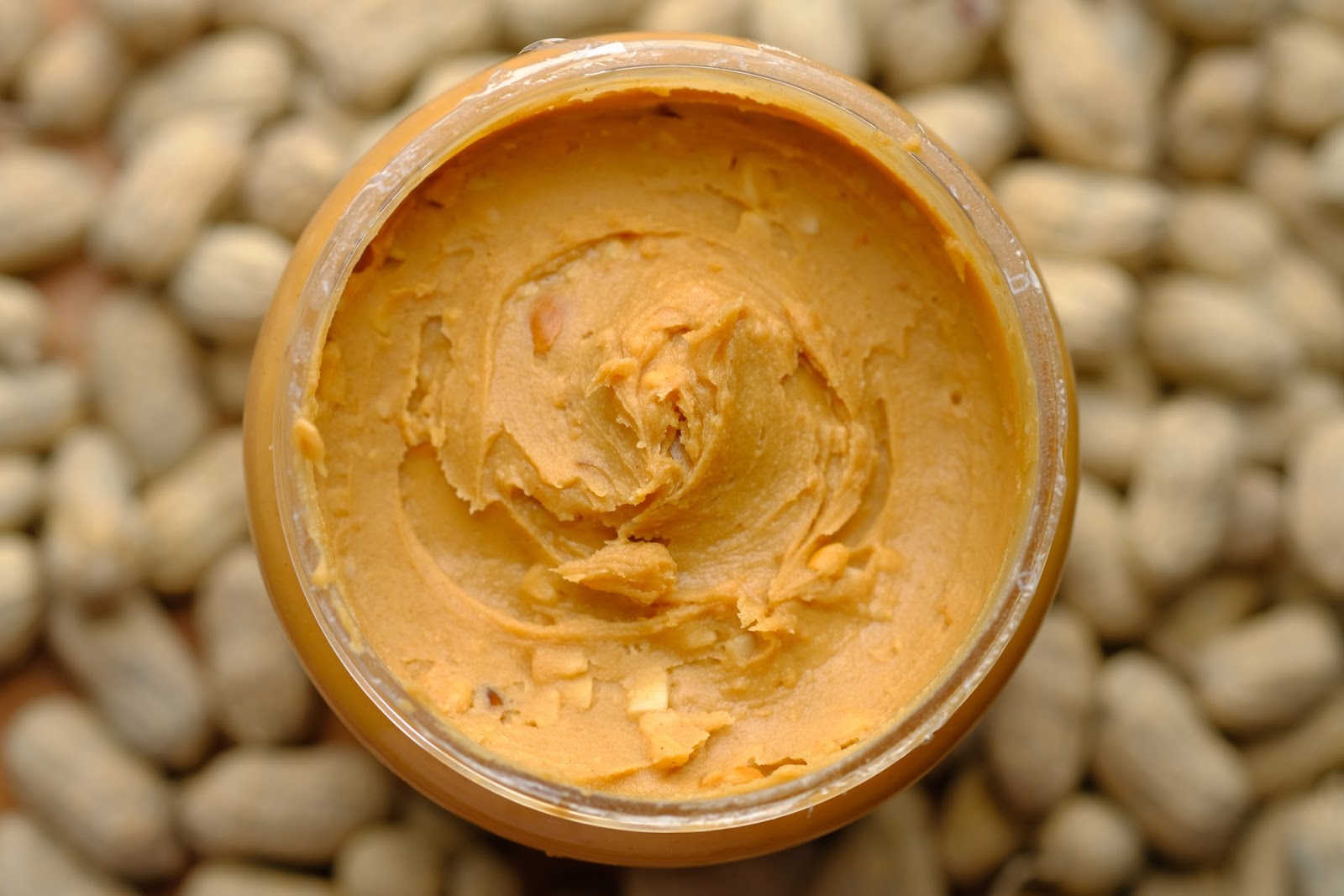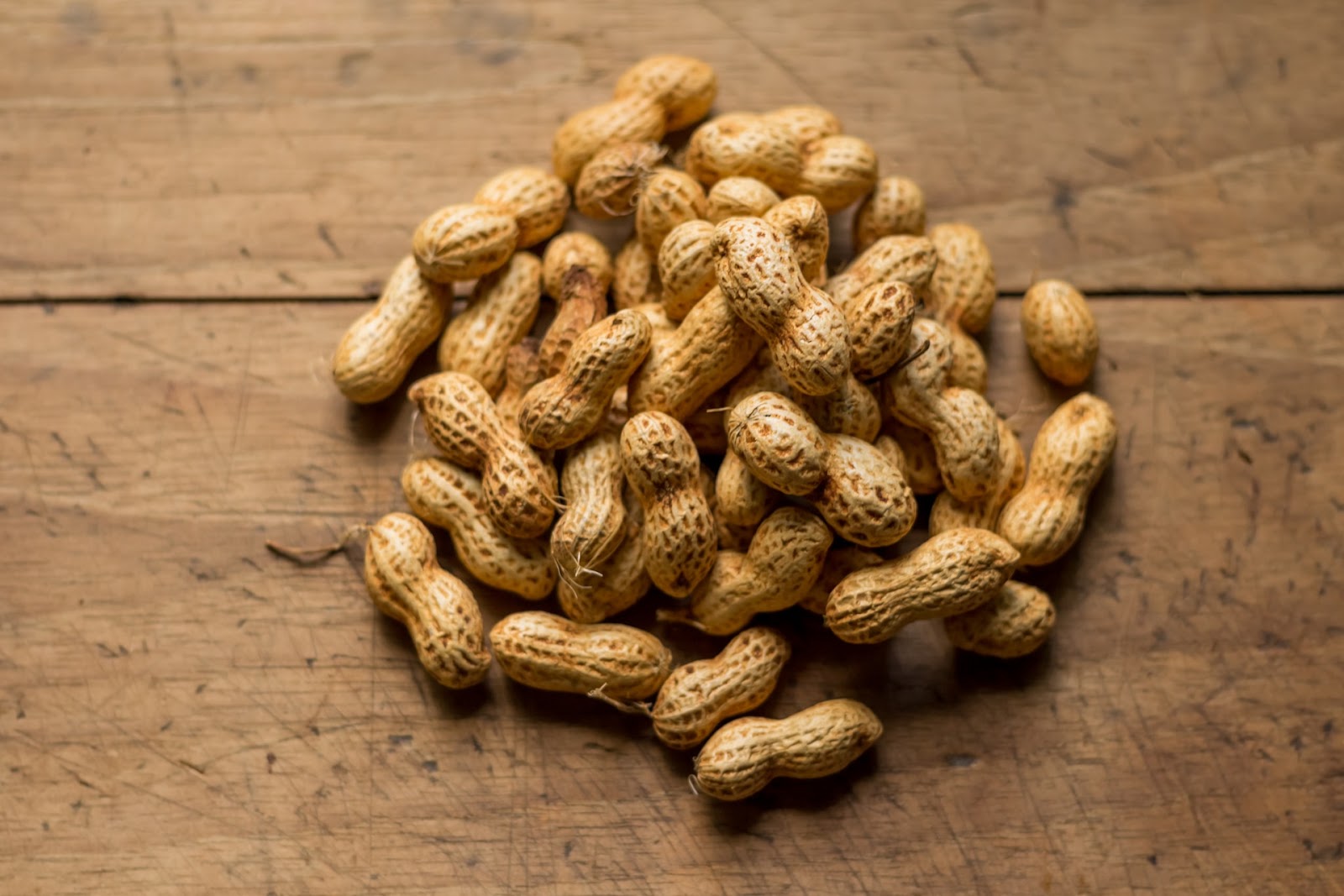
Making The Peanut Butter
Peanut Butter Preparation From Scratch
Making peanut butter without food processors is easy and can be done at home with ordinary kitchen tools. All you require is peanuts, oil, honey and a blender. Simply blend roasted peanuts with seared garlic, oil, and salt until it’s smooth. Additionally, to enhance the taste and texture of the peanut butter, honey can be added for sweetness as per your liking. The unique homemade flavor of this peanut butter recipe will leave you craving for more.
Did you know that in 1895 Doctor John Harvey Kellogg filed a patent invention for his process of producing peanut butter? Not having a food processor doesn’t mean you can’t get nutty with peanut butter – just grab a blender and a prayer.
How to Make Peanut Butter Without Food Processor
To make peanut butter without a food processor, you will need specific ingredients that are easily accessible. Peanut butter is a versatile spread that you can enjoy with toast, sandwiches, and fruits. Here’s what you need to complete the process:
- Roasted peanuts
- Powdered sugar or honey (optional)
- Salt
- Oil (vegetable, peanut, or coconut oil)
- Blender or Mixer
Roasted peanuts are the core ingredient, and the addition of salt gives the peanut butter its distinctive taste. You can add a sweetener such as powdered sugar or honey to enhance the flavor, and oil to achieve the desired consistency. Using a blender or mixer creates a smooth texture.
It’s essential to roast the peanuts before starting the process and ensure that they cool. After adding all the ingredients into the blender/mixer, run the appliance until the mixture is creamy and smooth. Scrape the sides and continue the process until you achieve your desired texture. To create a more citrusy taste, you can add a dash of lemon juice to balance all the flavors.
A friend once told me that she made peanut butter live on a Zoom call, and it tasted like anything she had ever experienced. She was surprised by how easy it was to make peanut butter without a food processor and loved having control over the ingredients.
Roasted peanuts: the perfect excuse to use your smoke detector as a kitchen timer.
Roasted Peanuts
Roasted Legumes for Homemade Peanut Butter Preparation
Roasting legumes is a crucial step in peanut butter preparation. Here are three critical facts about roasted legumes:
- To enhance their flavor, raw peanuts can roast in the oven at 350°F until golden brown.
- The roasting process may take up to 20-25 minutes or around 9-12 minutes if on stovetop.
- Roasting results in moisture evaporation and a crispier texture.
It would be best if you aimed to roast your peanuts until they have a rich aroma and deep brown color. Over-roasting might result in burning them or producing an unpleasant taste.
Fun fact, according to “The National Peanut Board,” individuals in America eat enough peanut butter every year to coat the floor of the Grand Canyon!
Adding salt to homemade peanut butter is like sprinkling just a little bit of cheeky attitude into an otherwise bland conversation.
Salt (Optional)
Adding a pinch of sodium chloride to homemade peanut butter can contribute to enhancing its taste and flavor. Although, this is completely optional and can be avoided for those who prefer a low-sodium or unsalted diet. While salt serves as a natural preservative, it can also balance the bitterness of the roasted peanuts and infuse a savory taste to the nutty spread. However, if one intends to store the peanut butter for an extended period, one might contemplate adding salt to prevent undesirable microbial growth.
It is important to regulate the amount of salt added as excessive consumption of salt may lead to adverse health effects such as high blood pressure and cardiovascular diseases. Therefore, it is advised to keep in mind the daily sodium intake limit recommended by health professionals before sprinkling some into your homemade peanut butter.
A friend of mine once tried making unsalted peanut butter since they preferred its original taste. However, after several attempts at making peanut butter without any added salt, they added a pinch of it in their final batch and concluded that it made a notable difference in its overall taste and appeal. Why settle for plain old nut butter when you can sweeten the deal with a little honey? Just don’t let the bees catch wind of it.
Honey (Optional)
For those who desire a sweeter taste in their peanut butter, there exists an optional ingredient that can add a touch of natural sweetness. Depending on the desired taste profile, honey can be added to homemade peanut butter.
- Honey provides a delicious taste to peanut butter, contributing an added depth of flavor.
- It adds a naturally derived sweetness without being overwhelming or cloying.
- Honey is high in antioxidants and other beneficial components, providing extra health benefits.
- Use fresh honey to avoid crystallization and seizing when mixing it with the peanuts.
- Before adding honey, consider adding salt – it will balance the sweet taste with savory undertones.
- Be mindful of how much honey is added – if too much is used, it may cause the mixture to become overly thick or runny.
To ensure proper texture and consistency is achieved, mix in honey gradually while processing peanuts in homemade peanut butter. Anecdotal stories state that ancient Greeks fed athletes sweetened nuts for an energy boost during the first Olympic games. This shows that humans have been enhancing nut-based foods with natural sweeteners for millennia.
Who needs oil when you can just use your tears to lubricate the peanut butter making process?
Oil (Optional)
For a creamier consistency, adding oil to homemade peanut butter is an option. Any type of oil can be used, including coconut, olive, or vegetable oil. Simply add a small amount of oil to the peanuts and blend until it reaches the desired consistency. Using oil in peanut butter not only improves its texture but also makes it last longer. The added oil helps to keep the peanut butter from drying out, making it easier to spread and use over time. However, be mindful of adding too much oil as it may make the mixture too runny.
To avoid ruining the peanut butter mixture with too much oil, gradually add small amounts at a time while blending until your preferred consistency is achieved. Remember that less is more when it comes to adding oil and start by experimenting with small amounts before adding more.
Pro Tip: If you prefer chunky peanut butter, before blending whole peanuts with other ingredients mix coarsely chopped peanuts into your finished smooth homemade peanut butter mixture.
If you don’t have a food processor, get ready to do some serious arm workouts with these equipment alternatives for making peanut butter.
Equipment Needed to Make Peanut Butter Without a Food Processor
Homemade peanut butter is a healthy option that can be easily prepared at home without the need for a food processor. You can make delicious peanut butter using basic kitchen equipment.
- Blender – High-powered blender can easily make peanut butter. Blend roasted peanuts in intervals until the desired consistency is achieved.
- Mortar and Pestle – They can be used to grind peanuts manually. It is time-consuming but gives a different flavor to the peanut butter.
- Food Mill – It is a great alternative for people who do not have a food processor. Grind roasted peanuts in the food mill manually until the desired texture is achieved.
You can also use a coffee grinder or meat grinder to make peanut butter. However, the consistency of the peanut butter may vary.
To make a creamy peanut butter, add a little bit of oil and salt to the mixture.
If you don’t have a food processor, you don’t have to panic. You can easily make homemade peanut butter using the basic kitchen equipment that you already have. Give it a try and enjoy the taste of your delicious homemade peanut butter. Don’t miss out on the opportunity to make your own peanut butter. Enjoy the taste of healthy, homemade peanut butter that is cost-effective and free of additives. Start making a batch today!
Blenders are like the superheroes of the kitchen, turning peanuts into peanut butter with just a spin of their blades.

Blender
A High-Speed Appliance to Combine Ingredients
Used to mix and puree food ingredients, a high-speed appliance is essential for making peanut butter without a food processor. With the right attachments, it can process nuts as well.
| Type | Examples |
| Countertop Blender | Vitamix, Ninja Professional Blender, Oster Pro 1200 |
| Immersion Blender | KitchenAid Immersion Blender, Braun Multiquick Hand Blender |
Besides being more compact and portable than a food processor, immersion blenders are more versatile as they can be used in deeper bowls. Additionally, some countertop models come with multiple attachments that make them handy for various tasks such as blending smoothies or soups. For one beginner cook who was short on counter space but big on creativity, a blender came in handy. Despite not having the fancy equipment that recipes called for, he managed to whip up batches of homemade nut butter using his trusty blender.
Who needs a gym membership when you can get a forearm workout by using a mortar and pestle to make peanut butter?
Mortar and Pestle
Using a grinding bowl and pestle is an excellent way to make peanut butter without a food processor. This traditional technique can be used in place of electrical gadgets to grind peanuts into nut butter.
Here is a table that provides crucial details regarding mortar and pestle:
| Tool | Mortar and pestle |
| Best for | Smaller batches, controlling texture |
| Pros | Affordable, space-saving, easy to clean |
| Cons | Requires more effort, not ideal for large batches |
One unique detail about using a mortar and pestle is that it allows for complete control over the texture of the peanut butter. Unlike food processors that might be limited by their blades or pulse functionalities, grinding the peanuts manually with a mortar and pestle gives you control over how smoothly or coarsely ground your peanut butter is.
A Pro Tip to keep in mind when using this method is to chop the peanuts into smaller pieces before attempting to grind them in the mortar and pestle. Doing so will make it easier to achieve smooth consistency with less effort.
You don’t need a PhD in kitchen science to make peanut butter without a food processor, just a little bit of muscle and some time to spare.
Steps to Make Peanut Butter Without a Food Processor
Peanut Butter Making Guide without a Food Processor
To make peanut butter without a food processor, you can use a blender or grinding stone. Here is a guide on how to do it:
- Roast peanuts until they turn golden brown and let them cool.
- Pour the peanuts into a blender or grinding stone and grind for a few minutes.
- Occasionally, stop the blender or grinding stone and scrape down the sides.
- Continue blending or grinding until the consistency becomes smooth and creamy.
- Store the peanut butter in an airtight container.
It is crucial to note that if the peanut butter is too thick, add oil to help it blend better. Also, do not over-blend to avoid the production of too much oil. It is essential to use peanuts without any added sugars or oils when making peanut butter. These products alter the natural taste of the peanut butter. Additionally, you can add honey, salt, or any other ingredient of your choice to customize the flavor.
To maintain the peanut butter’s freshness, store it in the refrigerator and consume it within two weeks. Making peanut butter at home without a food processor is simple and fun. Plus, it is free from any harmful additives and preservatives.
Blenders and peanuts – the ultimate tag team for when you want to make peanut butter without breaking a sweat (or your food processor).
Grinding Peanuts Using a Blender
To prepare peanut butter without a food processor, you can use a blender to grind the peanuts. It requires some manual effort, but the result is equally delicious and satisfying.
Follow these three simple steps to grind peanuts using a blender:
- Put the desired amount of peanuts into the blender.
- Set the blender on low speed and pulse it for 5-10 seconds at a time.
- Lastly, continue pulsing until you get your desired level of smoothness, or for about 1-2 minutes depending on how many peanuts you’ve used.
One important thing to keep in mind is to avoid over-processing as it can turn your peanut butter into a sticky mess instead of creamy goodness. If needed, you can add some oil (preferably vegetable oil) to make it smoother. Don’t miss out on the chance to make homemade peanut butter just because you don’t have a food processor. With a blender and some patience, achieving that creamy and nutty goodness is only steps away. So why not give it a try today?
Looks like we’re going old-school with our nut grinding, just like our ancestors did before the invention of the almighty food processor.

Grinding Peanuts Using a Mortar and Pestle
Using a mortar and pestle to grind peanuts is an efficient method for making peanut butter without a food processor. Here’s how to do it:
- Begin by placing the desired amount of raw or roasted peanuts into the mortar.
- Use the pestle to firmly crush the peanuts until they begin to break down.
- Continue grinding and crushing the peanuts until they become a paste-like consistency, being sure to scrape any larger pieces off the sides of the mortar.
- If necessary, add small amounts of oil (such as peanut or vegetable oil) to assist in creating a smoother texture.
- Once desired consistency is reached, transfer the peanut butter to a jar for storage.
Remember that this process requires physical effort and time compared to using an electronic processor. Pro Tip: Keep in mind that roasting your nuts before grinding will intensify their flavor.
Who needs a food processor when you have a strong arm and a jar of peanuts? These tips will have you spreading delicious DIY peanut butter in no time.
Tips and Tricks for Making Perfect Peanut Butter Without a Food Processor
For those without a food processor, making peanut butter may seem daunting. Here are straightforward guidelines on making perfect peanut butter without a food processor:
- First, decide if you want to use roasted or unroasted peanuts. Roasted peanuts have a more robust taste, while unroasted peanuts lend a lighter flavor.
- Next, place the chosen peanuts in a high-powered blender. You can add salt or sweetener at this point, as per your preference.
- Blend on low for a few seconds, slowly increasing the speed until the peanuts begin to break down. Use a spatula to scrape down the sides as needed.
- Continue blending until you reach the desired consistency, anywhere from chunky to smooth. This could take between 5-10 minutes, depending on the strength of the blender.
- Pour the peanut butter into a jar or container, and seal it tight. Store in the fridge for up to 2 weeks.
- Enjoy your homemade peanut butter, which is fresher, healthier, and tastier than the store-bought options.
An essential tip to keep in mind is that the quality of peanuts used is crucial in determining the final taste. It’s worth investing in high-quality peanuts to achieve optimal flavor.
Once, a friend of mine attempted to make peanut butter without roasted peanuts, which resulted in a bland, unsatisfying taste. Following this, we experimented with different blends of sweeteners, salt, and peanuts until we discovered the perfect balance. This trial and error process taught me that making peanut butter without a food processor requires patience, precision, and experimentation.
Roasting peanuts may make you feel like a hot mess in the kitchen, but the result will be worth it – a buttery, nutty flavor that will make you go nutty for peanut butter.
Roasting Peanuts for Better Texture and Flavor
The process of toasting peanuts is crucial for achieving the desired texture and flavor in homemade peanut butter. Here’s a guide on how to achieve it perfectly.
- Preheat your oven to 350°F.
- Spread the raw peanuts in a single layer on a baking sheet and place them in the preheated oven for approximately 10-15 minutes.
- Ensure they are uniformly roasted by checking that they have turned either light brown or golden before removing them from the oven.
Peanuts can be dry-roasted, oil-roasted, or honey-roasted for different flavors and textures, but dry-roasting is ideal for peanut butter production. Toasted peanuts give an excellent texture and rich nutty flavor when blended into creamy goodness!
Pro Tip: Choose high-quality unsalted shelled/raw peanuts for optimum results!
Give your peanut butter some sweetness with honey or a touch of oil for a smoother spread, just like how adding a little darkness to your humour can make it all the more delicious.
Adding Honey or Oil for Smoother Consistency
To achieve a smoother consistency when making peanut butter without a food processor, there are a few tricks you can try. These tips will help you make perfect peanut butter in no time.
- Try adding honey or oil to your peanuts for smoother consistency and better taste.
- Adding honey or maple syrup in small amounts will give your peanut butter a natural sweetness and creamier texture.
- If you prefer creamier peanut butter, add some vegetable oil to it. This will create a smoother consistency without losing the flavor of the peanuts.
To further enhance the flavor, try adding salt, vanilla extract, or chocolate powder while processing the peanuts. Doing so will allow you to create different variations of peanut butter to enjoy. For best results, use high-quality peanuts and don’t be afraid to experiment with different types and amounts of sweeteners and oils until you find what works best for you.
Remember to store your homemade peanut butter in an airtight jar in the refrigerator. This will keep it fresh for up to two months. Enjoy your delicious homemade peanut butter on toast, as an ingredient in smoothies, or by the spoonful! Get ready to spread some nutty goodness with these peanut butter hacks, but be warned – your food processor might be feeling a little bit left out.




